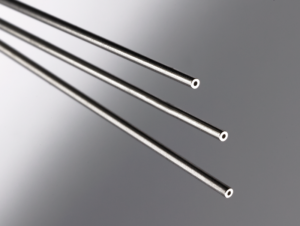Where Do You Really Need Tight Tolerances?
The fundamentals of small parts sourcing — dimensions, tolerances, and materials — have a lot to do with whether a part is optimized for manufacturability.
Tolerances affect product design, manufacturing, and quality control, making them critical to the successful performance of an end product. Therefore, determining tolerances and the amount of acceptable variation in machined or cut parts is a critical component of the cost of quality.
When doing a request for a quote, it may be tempting to assume that a very tight tolerance — perhaps the tightest tolerance possible — should be your default choice. Instead, it’s important to strike a balance between excessively cutting costs and implementing unnecessary requirements.
Potential Costs of Tight Tolerance Machining
Customers sometimes ask why a part is so expensive, not realizing that extending tolerances out just one more decimal point can increase the cost by a factor of two or three. That’s because a tighter tolerance requires greater care in fabrication and inspection to ensure accuracy.
The reality is, the tighter the tolerance, the more likely it is you will have to add the cost of the following into your part:
- Greater frequency of quality inspections
- More sophisticated or specialized inspection equipment
- Greater frequency of tool change-over
- Lower yields of final acceptable parts
- Higher scrap rates
- More raw material use due to part fallout
Besides having an impact on the cost of parts and assemblies, specifying a tight tolerance affects what tools and machines need to be used and the cutting technique that will be employed — which in turn also affect costs.
You need to ask yourself: Does the economical method utilize machines with the necessary nominal tolerance capabilities? If not, a tight tolerance could result in a very expensive production method.
Related Infographic: A Quick Guide to Choosing the Right Metal Cutting Method
In addition, the tighter the tolerances, the more difficult the component parts can be to assemble. That means downstream, tight tolerances can also increase the cost of assembly due to increased labor and higher scrap rates.
Some Standards for Default Tolerances
There are standards in place for different industries, with tolerances recommended based on factors such as function, material, machine, and process. There are also handbooks, technical guides, and fact sheets that provide default tolerances for a variety of products and processes.
In fact, most drawings will name a default tolerance under the heading “Unless Otherwise Specified.”
This is an indication that, unless a special tolerance value is given, the default tolerance should be used — varying by the other convention of how many values are presented to the right of the decimal point, even if those values are zero.
Why a Default Tolerance Is Not Always the Best Option
Accepting the default tolerances without understanding whether they’re truly necessary, or simply not noticing them at all, can needlessly drive up costs. Here are just a few common examples:
- An extra decimal of tolerance is specified not for a technical reason — that is, not because the particular part needs that level of precision — but because “that’s the way it has always been done.”
- In a project with a number of components requiring a tolerance of ±0.001 because of the way they must fit together, a separate part is automatically specified using the same tolerance — even though the part does not interact with the others and may or may not need the same tight tolerance.
- In an effort to keep mechanical drawing labels consistent to the same decimal point, a zero is accidentally misplaced, labeling a tolerance ±0.001 instead of ±0.010.
- Two parts that failed to fit together correctly are respecified at tighter tolerances — but the original failure was due to the parts being cut at two different loose tolerances.
Do You Really Need ± 0.001 vs. ± 0.01 (or ± 0.1)?
While the idea of zero tolerance machining or cutting might sound appealing, it’s important to acknowledge there really is no such thing as “zero tolerance.”
But undoubtedly there are times when a very tight tolerance is absolutely mandatory — when the difference between a product that works and one that fails means using dimensional tolerances expressed in decimal places that go much further than you initially expected.
In these scenarios, small variations in each part’s dimensions can multiply, especially with complex assemblies, resulting in tolerance buildup and unacceptable variations in the intended design.
However, if a tolerance is tighter than you really need, you’ll end up paying for it. But by carefully considering the end use, where the part is going, and what the part needs to do, you can:
- Distinguish between critical and non-critical tolerances
- Avoid unnecessarily tight tolerances
- Minimize your cost of quality
Example of a Tight Tolerance at Risk
Sometimes, interactions within a part can make a tight tolerance impractical or more difficult (and costly) to achieve.
For example, one Metal Cutting customer said they needed “a simple part”: a solid with a length and a diameter specified at a four-decimal tight tolerance (±0.000X). However, in probing for details, we discovered that the part needed a big corner radius, with no sharp edges — an interaction that would put the tight tolerance diameter at risk
In addition, the part needed a smooth surface finish that would require mechanical polishing, which in turn would remove material and affect the specified tight tolerance.
Fortunately, having uncovered these critical details, we were able to work with the customer and adjust the specifications to make a part that works for its intended use.
Related Article: Key Parameters for Choosing a 2-Axis Precision Cutting Method
Opting for a Loose Tolerance in the Design Phase
The good news is that there are many instances where a looser tolerance may be perfectly acceptable.
For example, depending on the end use of a product, you may indeed be able to opt for a standard default tolerance if the risk of failure in the product is low or would not have severe consequences.
Designers sometimes automatically program their software to a certain tolerance, resulting in all dimensions being specified to the same tolerance, whether or not they need to be. This can result in unnecessarily tight tolerances and unnecessary costs .
Where feasible unless a tight tolerance is required for proper fit or function of the final part or assembly, opting in the design phase for a loose tolerance can help to keep development and production costs down.
And of course, it’s vital to keep in mind the role that the complexity and dimensions of a design, as well as its tolerances, will ultimately play in part manufacturing costs.
Some Common Sense Tips on Choosing Tolerances
So, what is an appropriate tolerance for machined parts or cut-off parts? Before you commit to tight tolerance machining or cutting, consider:
- How does the part function in its end use?
- What tolerances are important for the environment in which the part will be used?
- Does the part interact with any other part or parts? If not, you might not need such a tight tolerance. If so, you need to be aware of the potential for tolerance accumulation.
- If the same part has different attributes requiring tolerances — such as both a diameter and a radius — which is the more critical dimension?
- As in the customer example above, is there a very tight tolerance that may be countered by some interaction within the part and, therefore, not be practical?
- Are you willing to test a slightly out-of-spec part to see if a looser tolerance will work for your application?
Making an informed decision about how tight a tolerance really needs to be can help you ensure product quality, optimize manufacturability, and speed time to market.
If you don’t know or are unsure about what tolerances are right for your application, don’t worry. You and your manufacturing partner can walk through the decision points together, to help you identify the mission-critical tolerances for your parts. Just ask!
For more tips on how to improve your quote request to optimize for manufacturability and produce the results you’re looking for, download our white paper How to Fine-Tune Your Quote Request to Your Maximum Advantage: Frequently Asked Questions in Small Parts Sourcing.






